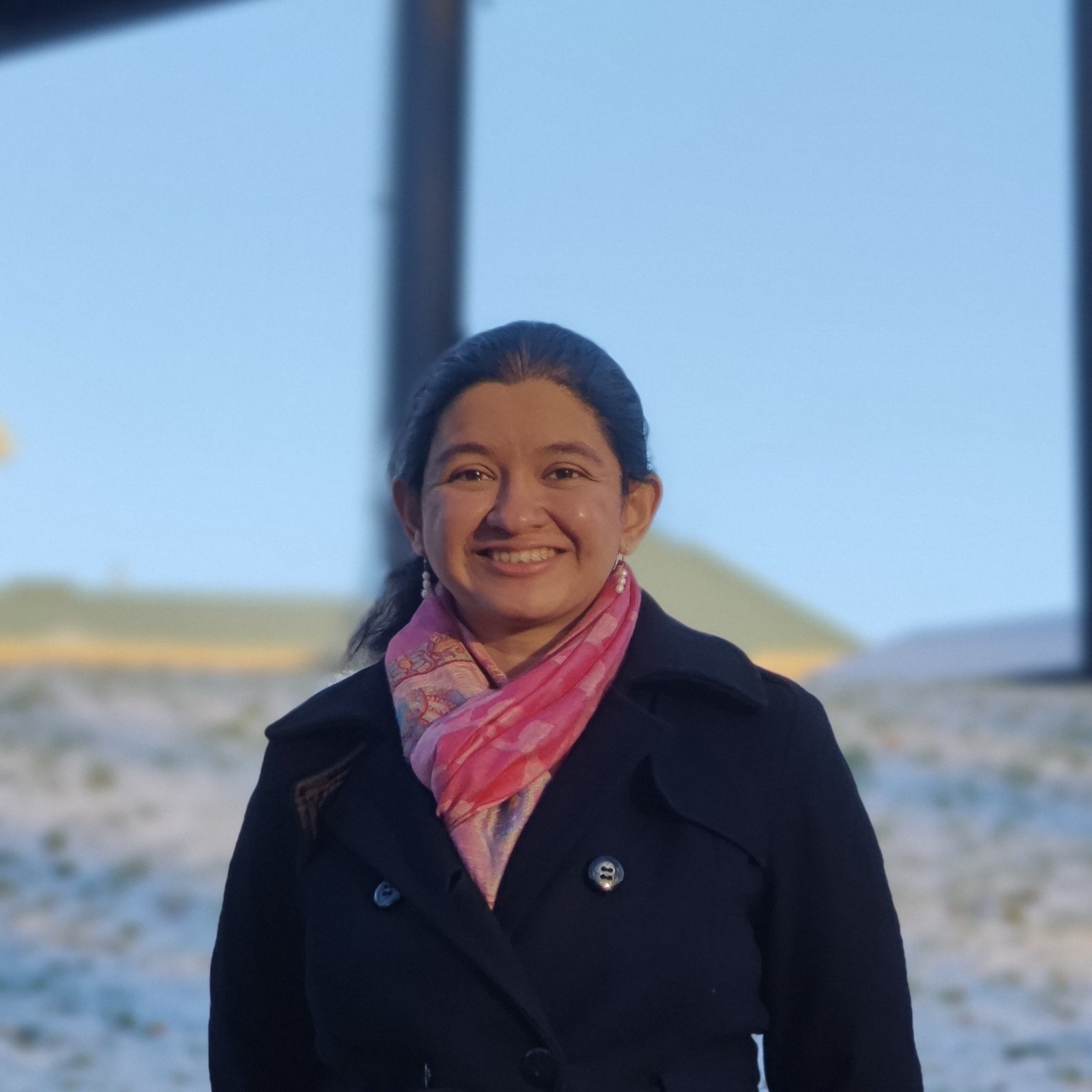The Ruvkun lab (January 1, 2025 update)
Marina Kniazeva PhD, working on surveillance of translation in immunity. Arrived in 2015 from the Min Han lab at University of Colorado, Boulder. 1989 PhD. in Biochemistry Institute of Developmental Biology, Russian Academy of Sciences, Moscow, Russia; 1984 MS, Moscow State University, Molecular Biology
Ashwin Seetharaman PhD, working on synMuv B gene regulation of viral immunity. Arrived in 2019 from the Peter Roy and Jason Moffat labs at University of Toronto. Ph.D 2015 Molecular Genetics, University of Toronto M.Sc 2008 Life Sciences, McMaster University B.Sc 2005 Zoology, Madurai Kamaraj India
Mohd Hafiz Bin Mohd Rothi PhD, working on screening for mutations that affect RNA interference pathways of C. elegans. 2021 PhD Molecular, Cellular, & Developmental Biology, University of Michigan; 2013 MS Molecular Biology, MARA University of Technology; 2008 BS Genetics, National University of Malaysia. He arrived in 2023 from the Greer Lab at Boston Children’s Hospital.
Jennifer Dara Cohen PhD, working on bacterial pathogen interactions with C. elegans jointly with the Rudner lab at Harvard Medical School. PhD from University of Pennsylvania, with Meera Sundaram and a BS from Lehigh University.
Himani Galagali, PhD, working on RNAi and miRNA pathways in C. elegans. PhD from Johns Hopkins University , with John Kim, and a BS from Indian Institute of Science, Bengaluru, with Varsha Singh.
Ardalan Hendi, PhD, working on mutations that enhance RNAi in C. elegans. BSc and PhD from the University of British Columbia , working with Kota Mizumoto.
Diane Sacchetti, lab administrator since 1998
Marina Kniazeva
Senior Research Associate
Marina studies how translational dysfunction is coupled to immunity and detoxification responses.
Ribosome surveillance. Protein translation from messenger RNA (mRNA) encoding transcription factor, ZIP-2, is (paradoxically) stimulated by dysfunction of any of many translational components during the elongation state of protein synthesis. The zip-2 mRNA has an alternative upstream open reading frame (uORF) that encodes a peptide; efficient translation of this uORF blocks the translation of the downstream zip-2 transcription factor. A mechanism of regulation of the stress response genes through the uORF upon starvation is understood to some extent. We found that it is not how it works in regulation of zip-2. We are now solving the puzzle.
Kniazeva, M and G Ruvkun. 2025. Activation of toxin defense of the ribosome by frameshift fusion of overlapping reading frames. In review at PNAS Dec 2024.
Kniazeva M, Ruvkun G. Rhizobium induces DNA damage in Caenorhabditis elegans intestinal cells. Proc Natl Acad Sci U S A. 2019 Feb 26;116(9):3784-3792. doi: 10.1073/pnas.1815656116. Epub 2019 Feb 11. PMID: 30808764
Kniazeva M, Zhu H, Sewell AK, Han M. A Lipid-TORC1 Pathway Promotes Neuronal Development and Foraging Behavior under Both Fed and Fasted Conditions in C. elegans. Dev Cell. 2015 May 4;33(3):260-71. doi: 10.1016/j.devcel.2015.02.015. Epub 2015 Apr 16. PMID: 25892013
Kniazeva M, Shen H, Euler T, Wang C, Han M. Regulation of maternal phospholipid composition and IP(3)-dependent embryonic membrane dynamics by a specific fatty acid metabolic event in C. elegans. Genes Dev. 2012 Mar 15;26(6):554-66. doi: 10.1101/gad.187054.112. PMID: 22426533
Kniazeva M, Euler T, Han M. A branched-chain fatty acid is involved in post-embryonic growth control in parallel to the insulin receptor pathway and its biosynthesis is feedback-regulated in C. elegans. Genes Dev. 2008 Aug 1;22(15):2102-10. doi: 10.1101/gad.1692008. PMID: 18676815
Kniazeva M, Crawford QT, Seiber M, Wang CY, Han M. Monomethyl branched-chain fatty acids play an essential role in Caenorhabditis elegans development. PLoS Biol. 2004 Sep;2(9):E257. doi: 10.1371/journal.pbio.0020257. Epub 2004 Aug 31. PMID: 15340492
Kniazeva M, Sieber M, McCauley S, Zhang K, Watts JL, Han M. Suppression of the ELO-2 FA elongation activity results in alterations of the fatty acid composition and multiple physiological defects, including abnormal ultradian rhythms, in Caenorhabditis elegans. Genetics. 2003 Jan;163(1):159-69. doi: 10.1093/genetics/163.1.159. PMID: 12586704
Ashwin Seetharaman
Senior Research Associate
Ashwin studies the molecular basis of how C. elegans synMuv mutants, which encode the DNA replication dREAM complex, enhance RNA interference. He is testing if the record of earlier viral genetic elements that may be intentionally archived in the C. elegans genome might be modified in enhanced RNAi mutants to anticipate novel genetic variations in new viruses that are later encountered. Previously, Ashwin earned his PhD with Richard Roy at the University of Toronto and was a postdoc with Jason Moffat, Charlie Boone, and Brenda Andrews at University of Toronto.
Seetharaman A, Galagali H, Linarte E, Liu MHX, Cohen JD, Chetal K, Sadreyev R, Tate AJ, Montgomery TA, Ruvkun G. Caenorhabditis elegans SynMuv B gene activity is down-regulated during a viral infection to enhance RNA interference. In press, PloS Biology. bioRxiv. 2024 Jul 16:2024.07.12.603258. doi: 10.1101/2024.07.12.603258. PMID: 39071373
Pascoe N, Seetharaman A, Teyra J, Manczyk N, Satori MA, Tjandra D, Makhnevych T, Schwerdtfeger C, Brasher BB, Moffat J, Costanzo M, Boone C, Sicheri F, Sidhu SS. Yeast Two-Hybrid Analysis for Ubiquitin Variant Inhibitors of Human Deubiquitinases. J Mol Biol. 2019 Mar 15;431(6):1160-1171. doi: 10.1016/j.jmb.2019.02.007. Epub 2019 Feb 11. PMID: 30763569
Hart T, Tong AHY, Chan K, Van Leeuwen J, Seetharaman A, Aregger M, Chandrashekhar M, Hustedt N, Seth S, Noonan A, Habsid A, Sizova O, Nedyalkova L, Climie R, Tworzyanski L, Lawson K, Sartori MA, Alibeh S, Tieu D, Masud S, Mero P, Weiss A, Brown KR, Usaj M, Billmann M, Rahman M, Constanzo M, Myers CL, Andrews BJ, Boone C, Durocher D, Moffat J. Evaluation and Design of Genome-Wide CRISPR/SpCas9 Knockout Screens. G3 (Bethesda). 2017 Aug 7;7(8):2719-2727. doi: 10.1534/g3.117.041277. PMID: 28655737
Chan KK, Seetharaman A, Bagg R, Selman G, Zhang Y, Kim J, Roy PJ. EVA-1 functions as an UNC-40 Co-receptor to enhance attraction to the MADD-4 guidance cue in Caenorhabditis elegans. PLoS Genet. 2014 Aug 14;10(8):e1004521. doi: 10.1371/journal.pgen.1004521. eCollection 2014 Aug. PMID: 25122090
Seetharaman A, Selman G, Puckrin R, Barbier L, Wong E, D'Souza SA, Roy PJ. MADD-4 is a secreted cue required for midline-oriented guidance in Caenorhabditis elegans. Dev Cell. 2011 Oct 18;21(4):669-80. doi: 0.1016/j.devcel.2011.07.020. PMID: 22014523
Seetharaman A, Cumbo P, Bojanala N, Gupta BP. Conserved mechanism of Wnt signaling function in the specification of vulval precursor fates in C. elegans and C. briggsae. Dev Biol. 2010 Oct 1;346(1):128-39. doi: 10.1016/j.ydbio.2010.07.003. Epub 2010 Jul 17. PMID: 20624381
Mohd Hafiz Bin Mohd Rothi
Research Fellow
Hafiz studies how small RNAs such as siRNAs, miRNAs, and piRNAs, regulate gene expression at the transcriptional and post-transcriptional levels. He uses phylogenetic analysis to screen for factors that are potentially involved in RNA interference pathways in C. elegans and testing if evolutionary linkage is connected with overlapping function.
Hafiz Rothi received his B.S. in Genetics from the National University of Malaysia, his M.S. in Molecular Biology from MARA University of Technology, and his Ph.D. from the University of Michigan, where he investigated the mechanisms of noncoding RNA-mediated gene silencing at the chromatin level in Arabidopsis thaliana. Hafiz was a postdoc with Eric Lieberman Greer at Boston Children’s Hospital / Harvard Medical School, where he worked on identifying novel transgenerational epigenetic factors in C. elegans and the role of ribosomal RNA modifications in regulating lifespan.
Liberman, N., Rothi, M.H., Gerashchenko, M.V., Zorbas, C., Boulias, K., MacWhinnie, F.G., Ying, A.K., Flood Taylor, A., Al Haddad, J., Shibuya, H., et al. (2023). 18S rRNA methyltransferases DIMT1 and BUD23 drive intergenerational hormesis. Molecular Cell. doi: 10.1016/j.molcel.2023.08.014.
Rothi, M.H., Tsuzuki, M., Sethuraman, S., and Wierzbicki, A.T. (2021). Reinforcement of transcriptional silencing by a positive feedback between DNA methylation and non-coding transcription. Nucleic Acids Research. doi: 10.1093/nar/gkab746.
Rothi, M.H., Sethuraman, S., Dolata, J., Boyle, A.P., and Wierzbicki, A.T. (2020). DNA methylation directs nucleosome positioning in RNA-mediated transcriptional silencing. bioRxiv, 2020.10.29.359794. doi: 10.1101/2020.10.29.359794.
Rowley, M.J., Rothi, M.H., Böhmdorfer, G., Kuciński, J., and Wierzbicki, A.T. (2017). Long-range control of gene expression via RNA-directed DNA methylation. PLoS Genet doi: 13. 10.1371/journal.pgen.1006749.
Jennifer Cohen
Research Fellow
(jointly with David Rudner lab Harvard Medical School)
Jennifer Cohen arrived in 2023 as a joint postdoc with Dr. David Rudner. She is studying how environmental bacteria interact with C. elegans in the gut, but is frequently distracted by other cool microbes. She got her Ph.D. In the lab of Dr. Meera Sundaram at the University of Pennsylvania.
Seetharaman A, Galagali H, Linarte E, Liu MHX, Cohen JD, Chetal K, Sadreyev R, Tate AJ, Montgomery TA, Ruvkun G. Caenorhabditis elegans SynMuv B gene activity is down-regulated during a viral infection to enhance RNA interference. In press, PloS Biology. bioRxiv. 2024 Jul 16:2024.07.12.603258. doi: 10.1101/2024.07.12.603258. PMID: 39071373
Cohen JD, Cadena Del Castillo CE, Serra ND, Kaech A, Spang A, Sundaram MV. The Caenorhabditis elegans Patched domain protein PTR-4 is required for proper organization of the precuticular apical extracellular matrix. Genetics. 2021 Nov 5;219(3):iyab132. PMID: 34740248
Cohen JD, Sparacio AP, Belfi AC, Forman-Rubinsky R, Hall DH, Maul-Newby H, Frand AR, Sundaram MV. A multi-layered and dynamic apical extracellular matrix shapes the vulva lumen in Caenorhabditis elegans. Elife. 2020 Sep 25;9:e57874. PMID: 32975517
Cohen JD, Bermudez JG, Good MC, Sundaram MV. A C. elegans Zona Pellucida domain protein functions via its ZPc domain. PLoS Genet. 2020 Nov 3;16(11):e1009188. PMID: 33141826
Cohen JD, Flatt KM, Schroeder NE, Sundaram MV. Epithelial Shaping by Diverse Apical Extracellular Matrices Requires the Nidogen Domain Protein DEX-1 in Caenorhabditis elegans. Genetics. 2018 Nov 8. PMID: 30409789
Flatt KM, Beshers C, Unal C, Cohen JD, Sundaram MV, Schroeder NE. Epidermal Remodeling in Caenorhabditis elegans Dauers Requires the Nidogen Domain Protein DEX-1. Genetics. 2018 Nov 8. PMID: 30409788
Forman-Rubinsky R, Cohen JD, Sundaram MV. Lipocalins Are Required for Apical Extracellular Matrix Organization and Remodeling in Caenorhabiditis elegans. Genetics. 2017 Aug 25. PMID: 28842397
Gill HK*, Cohen JD*, Ayala- Figueroa J, Forman-Rubinsky R, Poggioli C, Bickard K, Parry JM, Pu P, Hall DH, Sundaram MV. Integrity of Narrow Epithelial Tubes in the C. elegans Excretory System Requires a Transient Luminal Matrix. PLoS Genet. 2016 Aug 2;12(8):e1006205. PMID:27482894 *Co-first authors
Bui HM, Enis D, Robciuc MR, Nurmi HJ, Cohen JD, Chen M, Yang Y, Dhillon V, Johnson K, Zhang H, Kirkpatrick R, Traxler E, Anisimov A, Alitalo K, Kahn ML. Proteolytic activation defines distinct lymphangiogenic mechanisms for VEGFC and VEGFD. J Clin Invest. 2016 Jun 1;126(6):2167-80. PMID: 27159393
Himani Galagali
Research Fellow
PhD from Johns Hopkins University, with John Kim.
BS from Indian Institute of Science, Bengaluru, with Varsha Singh.
Seetharaman A, Galagali H, Linarte E, Liu MHX, Cohen JD, Chetal K, Sadreyev R, Tate AJ, Montgomery TA, Ruvkun G. Caenorhabditis elegans SynMuv B gene activity is down-regulated during a viral infection to enhance RNA interference. In press, PloS Biology. bioRxiv. 2024 Jul 16:2024.07.12.603258. doi: 10.1101/2024.07.12.603258. PMID: 39071373
Patel R*, Galagali H*, Kim JK, and Frand AR. Feedback between a retinoid-related nuclear receptor and the let-7 microRNAs controls the pace and number of molting cycles in C. elegans. eLife 15(11):e80010 (2022).
Wirick MJ, Cale AR, Smith IT, Alessi AF, Starostik MR, Cuko L, Lalk K, Schmidt MN, Olson BS, Salomon PM, Santos A, Schmitter-Sánchez, A, Galagali H, Ranke KJ, Wolbert PA, Knoblock ML, Kim JK, and Karp X. daf-16/FOXO blocks adult cell fate in Caenorhabditis elegans dauer larvae via lin-41/TRIM71. PLOS Genetics 17(11):e1009881 (2021)
Galagali H and Kim JK. The multifaceted roles of microRNAs in differentiation. Curr Opin Cell Biol 67:118-140 (2020).
Galagali H and Kim JK. miRISC composition determines target fates in time and space. Developmental Cell 47:142-143 (2018)
Manuscripts in preparation
Galagali H, Wirick MJ, Alessi AF, Starostik MR, Penne L, Feng S, Jacobsen S, Karp X, and Kim JK. DAF-16 represses the molting factor NHR-23 and the let-7 family of microRNAs to maintain quiescence during dauer.
Galagali H, Alessi AF, Nika L, Karp X and Kim JK. RNA binding protein Unkempt/UNK-1 promotes miRISC activity during dauer.
Ardalan Hendi
Research Fellow
PhD from University of British Columbia in Vancouver Canada where he investigated the mechanisms that underlie synaptic patterning in the C. elegans nervous system
Hendi, Ardalan et al. Channel-independent function of UNC-9/Innexin in spatial arrangement of GABAergic synapses in C. elegans. eLife 11, doi:10.7554/eLife.80555 (2022).
McDiarmid, T. A., Belmadani, M., Liang, J., Meili, F., Mathews, E. A., Mullen. G. P., Hendi, Ardalan. et al. Systematic phenomics analysis of autism-associated genes reveals parallel networks underlying reversible impariments in habituation. Proc Natl Acad Sci U S A 117, 656-667, doi:10.1073/pnas.1912049116 (2020).
Hendi, Ardalan*., Kurashina, M*. & Mizumoto, K. Intrinsic and extrinsic mechanisms of synapse formation and specificity in C. elegans. Cell Mol Life Sci 76, 2719-2738, doi:10.1007/s00018-019-03109-1 (2019). *Co-first authors
Chen, X., Hendi, Ardalan*., Shibata, A. CE*. et al. Rap2 and TNIK control Plexin-dependent tiled synaptic innervation in C. elegans. Elife 7, doi:10.7554/eLife.38801 (2018). *Co-second authors
Hendi, Ardalan. & Mizumoto, K. GFPnovo2, a brighter GFP variant for in vivo labeling in C. elegans. MicroPubl Biol, doi:10.17912/49YB-7K39 (2018)."
Diane Sacchetti
Administration and general lab life






